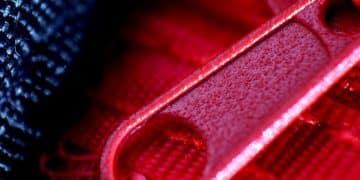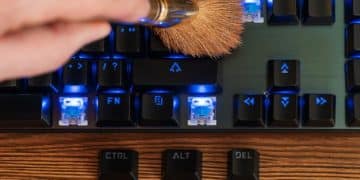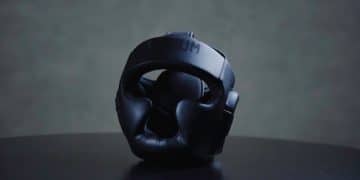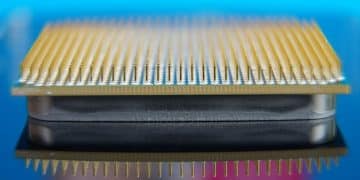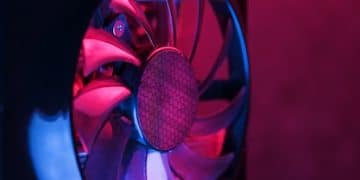Extend Your Gaming PC’s Life: Maintenance & Cleaning Guide
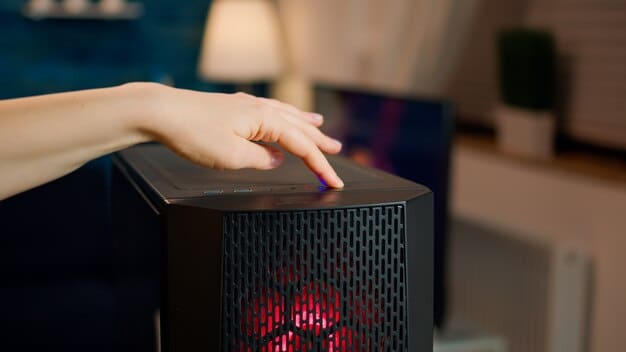
Maintaining and cleaning your gaming hardware is crucial for extending its lifespan, ensuring optimal performance, and preventing costly breakdowns, directly impacting your immersive gaming experience and long-term investment.
In the dynamic world of PC gaming, your rig isn’t just a collection of components; it’s an investment, a portal to virtual worlds, and a source of countless hours of entertainment. To maximize this investment and ensure peak performance through endless gaming sessions, understanding how to extend your PC’s life: a guide to maintaining and cleaning your gaming hardware becomes not merely a recommendation, but an essential practice. This comprehensive approach ensures longevity and consistent, high-fidelity gaming.
Understanding the Impact of Neglect on Gaming Hardware
Neglecting your gaming PC can have severe consequences, leading to reduced performance and a significantly shorter lifespan for your expensive components. Heat, dust, and general wear and tear are the silent killers of gaming rigs, often accumulating unnoticed until a critical failure occurs. Proactive maintenance is not about being overly cautious, but rather about safeguarding your investment.
Over time, dust acts as an insulating layer, trapping heat and forcing your components to work harder, leading to higher temperatures. This thermal stress can degrade vital parts like the CPU, GPU, and even solid-state drives, ultimately causing throttling, crashes, and premature failure. Moreover, electrical components can suffer from static buildup or corrosion accelerated by dust accumulation, leading to intermittent issues or complete breakdowns.
The Enemy Within: Dust and Heat
Dust, often invisible to the naked eye until it forms thick blankets, is the primary culprit behind many PC issues. It infiltrates every crevice of your system, from fan blades to heatsink fins, impeding airflow and transforming once efficient cooling systems into incubators of heat. This constant battle against elevated temperatures impacts more than just immediate performance.
- Reduced Component Lifespan: Prolonged exposure to high temperatures accelerates the degradation of microchips and capacitors, leading to early component failure.
- Performance Throttling: CPUs and GPUs automatically lower their clock speeds when they get too hot, resulting in noticeable frame rate drops and stuttering in games.
- Increased Noise: Fans spin faster and louder to compensate for poor cooling, creating disruptive noise during gaming sessions.
Beyond the internal components, neglect can also extend to peripherals. Sticky keys, unresponsive mouse buttons, and crackling headphones are common outcomes of disregarding regular cleaning. These seemingly minor issues can significantly detract from the gaming experience. Ultimately, a clean and well-maintained system runs cooler, performs better, and lasts longer, providing a smoother and more enjoyable gaming experience for years to come.
Essential Tools and Preparations for PC Cleaning
Before diving into the intricacies of cleaning your gaming PC, having the right tools and making proper preparations are paramount. Using inappropriate cleaning methods or tools can cause more harm than good, potentially damaging sensitive electronics. Safety should always be your top priority, ensuring components are not only clean but also remain functional after the process.
Gathering Your Arsenal: What You’ll Need
A successful cleaning session begins with gathering the necessary items. These tools are generally inexpensive and readily available, representing a small investment for the significant benefits they provide in extending your hardware’s life.
- Compressed Air: Absolutely essential for dislodging dust from heatsinks, fans, and tight spaces. Use short bursts to avoid condensation.
- Soft-Bristled Brush: An anti-static brush or a clean, soft paintbrush is ideal for gently sweeping away loose dust from surfaces.
- Microfiber Cloths: Perfect for wiping down smooth surfaces, screens, and peripheral components without leaving lint or scratches.
- Isopropyl Alcohol (99%): For cleaning stubborn grime or residue on non-sensitive components, though sparingly.
- Screwdriver Set: To open your PC case and remove components for deeper cleaning.
- Cable Ties: For managing internal cables, improving airflow once cleaning is complete.
Safety First: Pre-Cleaning Precautions
Before any cleaning begins, safety measures must be strictly observed. This includes protecting yourself from static electricity and ensuring the PC is completely depowered. These steps prevent accidental damage to internal components. Even a small electrostatic discharge can fry delicate circuitry.
Always unplug your PC from the wall outlet and press the power button a few times to drain any residual charge. Work on a non-carpeted surface and consider wearing an anti-static wrist strap, which grounds you to the PC case. This ensures any static buildup on your body is safely dissipated, protecting the sensitive internal components of your gaming rig.
Deep Cleaning the Internal Components of Your Gaming PC
Once you’ve gathered your tools and taken safety precautions, it’s time to delve into the comprehensive cleaning of your PC’s internal components. This process requires patience and a methodical approach, as each part plays a crucial role in the overall performance and cooling efficiency of your system. A thorough internal clean can dramatically improve thermal performance, reducing stress on components and extending their operational life.
Conquering Dust: Fans and Heatsinks
Fans and heatsinks are the front lines in the battle against heat. They are also prime locations for dust accumulation, which can severely impede their effectiveness. Regular cleaning of these components is vital for maintaining optimal airflow and heat dissipation, which directly translates to better performance and longevity for your CPU and GPU.
Begin by carefully opening your PC case. Use compressed air in short, controlled bursts to dislodge dust from fan blades and heatsink fins. For stubborn clumps, a soft-bristled brush can be used to gently sweep them away. Hold fan blades stationary while blowing air to prevent over-spinning, which could damage their bearings. Pay particular attention to the CPU and GPU heatsinks, as these are critical for cooling the most powerful components.
Power Supply Unit (PSU) and Cable Management
The PSU is often overlooked during cleaning, yet it’s a critical component that can harbor a significant amount of dust. Dust inside the PSU can lead to overheating and reduced efficiency, potentially shortening its lifespan or even causing system instability. Use compressed air to clean its intake and exhaust vents, being careful not to over-pressurize the internals. If you have a modular PSU, you can disconnect unnecessary cables to improve airflow.
Effective cable management goes hand-in-hand with internal cleaning. Neatly organized cables not only make your PC look better but also significantly improve airflow within the case. Use cable ties to bundle and route cables behind the motherboard tray or along the case edges. This creates clearer pathways for air, enhancing the cooling efficiency of your fans and reducing hot spots within the case.
Cleaning internal components might seem daunting at first, but with practice, it becomes a routine that ensures your gaming PC remains a high-performance machine. The visible improvement in airflow and the reduction in operating temperatures will be a clear testament to the value of this regular maintenance. Taking the time for this deep clean will reward you with a more stable, cooler, and ultimately longer-lasting gaming experience.
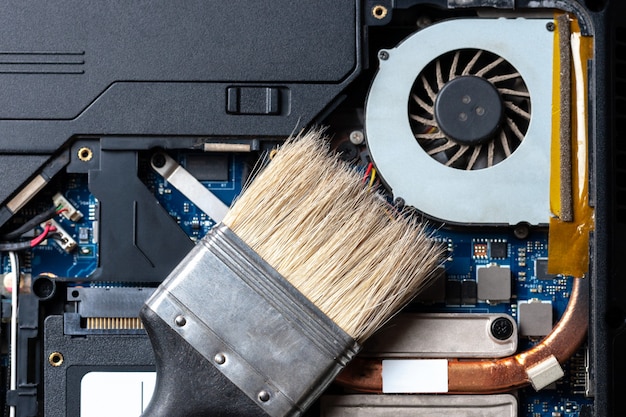
Maintaining Peripherals and External Components
While the internal health of your gaming PC is paramount, the external components and peripherals are equally important for a seamless gaming experience. These are the parts you physically interact with most, and their cleanliness directly impacts comfort, functionality, and even hygiene. Neglecting them can lead to sticky keys, unresponsive mice, and a generally unappealing setup, detracting from your overall enjoyment.
Keyboard and Mouse: Your Primary Interfaces
Your keyboard and mouse bear the brunt of daily interaction, accumulating dirt, oils, and food crumbs. A dirty keyboard can lead to keys sticking or becoming unresponsive, while a grimy mouse can hinder precision and responsiveness, critical for competitive gaming. Regular cleaning of these essential peripherals is straightforward and yields immediate improvements.
- Keyboard: Unplug the keyboard first. Turn it upside down and gently shake out loose debris. Use compressed air to blow out dust and crumbs from between the keys. For stubborn grime, use a cotton swab lightly dampened with isopropyl alcohol to clean keycaps and the surrounding areas. Some enthusiast keyboards allow for keycap removal for a deeper clean.
- Mouse: Clean the mouse surface with a microfiber cloth slightly dampened with isopropyl alcohol. Pay attention to the sensor on the underside, ensuring it’s free of dust and debris for accurate tracking. For gaming mice with intricate designs, use cotton swabs to reach tight spots.
Monitor and Other External Surfaces
A crystal-clear monitor is crucial for an immersive gaming experience. Fingerprints, dust, and smudges can degrade visual quality. For monitors, always use a dedicated screen cleaner or a clean, dry microfiber cloth. Avoid harsh chemicals or paper towels, which can scratch the screen coating. Wipe gently in one direction to remove dust, then use a fresh, slightly damp (with screen cleaner) cloth for smudges.
For the PC case exterior and other external surfaces, a microfiber cloth and a mild cleaning solution (or plain water) are usually sufficient. Wipe down surfaces to remove dust and fingerprints. Don’t forget to clean the headphone jack and USB ports with a small, dry brush or compressed air to ensure good connectivity and prevent blockages. Maintaining these external elements ensures your entire gaming setup is a clean, responsive, and aesthetically pleasing environment.
Software Maintenance: Keeping Your PC Running Smoothly
Beyond the physical upkeep, software maintenance is a critical, yet often underestimated, aspect of extending your PC’s life and maintaining optimal performance. A clean and organized operating system, free of bloatware and corrupted files, can significantly improve system responsiveness, reduce crashes, and contribute to a more stable gaming environment. It’s the digital counterpart to a physical deep clean, ensuring that your hardware can perform to its full potential.
Operating System Health and Driver Updates
The operating system (OS) is the foundation upon which your gaming experience is built. Over time, it can become cluttered with temporary files, cached data, and fragmented drives, leading to slowdowns. Regularly cleaning your OS involves several key practices.
- Disk Cleanup: Utilize the built-in Disk Cleanup tool in Windows to remove temporary files, cached web pages, and recycle bin contents. This frees up valuable storage space and can improve system responsiveness.
- Defragmentation (for HDDs): If your system still uses a traditional Hard Disk Drive (HDD), regularly defragmenting it can improve file access speeds. Solid State Drives (SSDs) do not require defragmentation and should not be defragmented.
- Driver Updates: Keep your graphics card drivers, chipset drivers, and other essential hardware drivers updated. Manufacturers frequently release updates that include performance optimizations, bug fixes, and compatibility improvements, directly impacting gaming performance and stability.
Malware and Bloatware: The Silent Performance Killers
Malware, adware, and unnecessary “bloatware” can silently consume system resources, cause crashes, and even compromise your data. These unwanted programs often run in the background, reducing available RAM and CPU cycles, which directly impacts gaming performance. Regular scanning and removal are critical.
Install reputable antivirus and anti-malware software and perform regular scans. Be cautious when installing new software, especially freeware, as it can often bundle unwanted applications. Regularly review your installed programs and uninstall anything you don’t recognize or no longer use. This proactive approach ensures your system remains lean, secure, and ready for demanding gaming sessions, significantly contributing to the longevity and stability of your gaming PC.
Thermal Management and Environmental Factors
Even with meticulous cleaning, your PC’s performance and lifespan are heavily influenced by its operating environment and the effectiveness of its thermal management. Heat is the ultimate enemy of electronics, and managing it effectively is crucial for extending the life of your gaming hardware. Understanding and optimizing these factors can provide significant long-term benefits, preventing thermal throttling and component degradation.
Optimizing Airflow and Case Layout
Proper airflow within your PC case is fundamental to efficient cooling. A well-organized case allows cool air to enter, circulate effectively around components, and hot air to be expelled. This creates a continuous flow that prevents heat from building up in localized areas. Factors like fan placement, cable management, and even the type of case can impact airflow.
- Fan Configuration: Ensure your case fans are configured for optimal airflow. Generally, front and bottom fans should act as intakes, pulling cool air in, while rear and top fans should act as exhausts, pushing hot air out.
- Cable Management: As mentioned previously, routing cables neatly behind the motherboard tray or along the case edges prevents them from obstructing airflow.
- Clearance: Ensure there’s adequate space around your PC tower for air to circulate freely. Don’t push it flush against a wall or into a tight cabinet.
Ambient Temperature and Humidity
The room in which your PC operates also plays a significant role in its thermal health. A hot room makes it harder for your PC’s cooling system to dissipate heat, leading to higher internal temperatures. Similarly, high humidity can contribute to corrosion over time, especially in coastal regions or areas with naturally humid climates.
Aim to keep your gaming space at a comfortable ambient temperature. Air conditioning or a well-placed fan can help. While a little humidity is generally not an issue, extreme levels can be problematic. If you live in a very humid environment, consider using a dehumidifier in the room where your PC is located. Controlling these environmental factors provides an extra layer of protection for your gaming hardware, complementing your cleaning and maintenance efforts to ensure a long and healthy life for your rig.
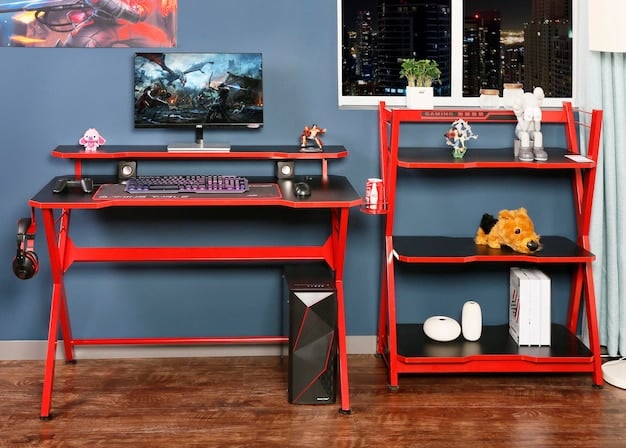
Upgrade Considerations and Future-Proofing
While regular maintenance is key to extending the life of your current gaming PC, understanding when and how to upgrade is equally important for long-term enjoyment and competitive relevance. Hardware evolves rapidly, and what was cutting-edge yesterday might struggle with demanding titles tomorrow. Strategic upgrades can breathe new life into an aging system, effectively extending its functional lifespan in the ever-evolving gaming landscape.
Strategic Component Upgrades
Not all upgrades are created equal, and some offer a better return on investment for extending your PC’s usability. Identifying bottlenecks in your system is the first step toward smart upgrading. Often, a single component upgrade can significantly boost overall performance, allowing your PC to handle newer games or applications more efficiently.
- GPU (Graphics Processing Unit): This is often the most impactful upgrade for gaming performance. A newer, more powerful GPU can dramatically increase frame rates and enable higher resolutions or graphical settings.
- SSD (Solid State Drive): Upgrading from an HDD to an SSD, especially an NVMe drive, offers a massive improvement in system responsiveness, boot times, and game loading speeds. This doesn’t directly extend component life but makes the system feel much faster.
- RAM (Random Access Memory): Insufficient RAM can lead to stuttering and slower multitasking. Upgrading to 16GB or 32GB (for demanding users) can smooth out performance in memory-intensive games and applications.
- CPU (Central Processing Unit): While less frequent, a CPU upgrade can be necessary if your current processor is bottlenecking a powerful GPU, but this often requires a new motherboard as well, making it a more substantial undertaking.
Planning for Obsolescence and System Longevity
It’s an undeniable truth in the tech world: obsolescence is inevitable. However, by planning ahead, you can mitigate its effects. When purchasing new components or building a PC, consider future compatibility. Opting for a motherboard with modern chipsets and expansion slots, or a PSU with sufficient wattage for potential future GPU upgrades, can save money and hassle down the line.
Furthermore, understanding your gaming habits and future needs helps. If you play demanding AAA titles, more frequent upgrades might be necessary. If you stick to less graphically intensive games, your hardware will likely remain relevant for longer. Regularly backing up your data is another crucial aspect of long-term system integrity, protecting against unforeseen hardware failures regardless of its age. By combining diligent maintenance with thoughtful upgrade strategies, you can ensure your gaming PC remains a capable and enjoyable machine for many years.
Advanced Maintenance Tips and Troubleshooting
For those looking to go beyond basic cleaning and maintenance, several advanced tips and fundamental troubleshooting skills can further enhance your PC’s longevity and stability. These practices typically involve a deeper dive into system monitoring, thermal compound management, and early problem detection, ensuring your high-performance gaming rig continues to operate at its peak.
Monitoring and Optimizing System Performance
Proactive monitoring is key to detecting potential issues before they escalate into major problems. Tools designed for hardware monitoring can provide invaluable insights into your system’s health, allowing you to identify overheating components or performance bottlenecks in real-time. This data can inform your maintenance schedule and upgrade decisions.
- Temperature Monitoring: Utilize software like HWMonitor, MSI Afterburner, or NZXT Cam to track CPU and GPU temperatures. High idle or load temperatures are clear indicators that your cooling system might need attention or an upgrade.
- Fan Curve Optimization: Many motherboard utilities and GPU software (e.g., AMD Adrenalin, NVIDIA Control Panel) allow you to customize fan curves. Adjusting these can ensure your fans ramp up more aggressively when temperatures rise, improving cooling efficiency.
- Benchmark Testing: Periodically run benchmarks to evaluate your system’s performance. Consistent drops in scores might indicate a hardware issue or a need for deeper cleaning and optimization.
Thermal Compound Application and Error Logs
The thermal compound (thermal paste) between your CPU/GPU and their respective heatsinks is crucial for efficient heat transfer. Over time, this compound can dry out and lose effectiveness, leading to higher temperatures. Reapplying fresh thermal paste every few years can significantly improve cooling performance, often reducing temperatures by several degrees.
Monitoring system error logs (Event Viewer in Windows) can reveal recurrent issues, such as driver crashes, hardware failures, or software conflicts, that might otherwise go unnoticed. Understanding these logs can help diagnose underlying problems, allowing you to address them proactively rather than reacting to a full system failure. Regular maintenance combined with these advanced techniques provides a holistic approach to ensuring the enduring health and high performance of your gaming PC, protecting your investment for an extended period.
| Key Point | Brief Description |
|---|---|
| 🌬️ Dust Removal | Regularly clear dust from fans, heatsinks, and vents to prevent overheating and maintain optimal airflow. |
| 🔧 Software Upkeep | Keep drivers updated, run antivirus scans, and manage background processes for peak software performance. |
| 🌡️ Thermal Management | Optimize case airflow, monitor temperatures, and consider reapplying thermal paste for sustained cooling efficiency. |
| 🖱️ Peripheral Care | Clean keyboards, mice, and monitors regularly for better hygiene and to ensure responsive and accurate input. |
Frequently Asked Questions
▼
For most gaming PCs, a thorough cleaning every 3 to 6 months is recommended. However, if you live in a dusty environment, have pets, or use your PC heavily, more frequent cleaning (e.g., monthly) might be beneficial to prevent dust buildup and maintain optimal performance.
▼
No, it is generally not safe to use a regular vacuum cleaner. Vacuum cleaners can generate static electricity, which can severely damage sensitive electronic components. Always use compressed air or an anti-static brush designed for electronics to safely remove dust from inside your PC case.
▼
For cleaning electronic components and surfaces, always use isopropyl alcohol with a purity of 90% or higher, preferably 99%. This type of alcohol evaporates quickly and leaves no residue, making it safe for electronics. Avoid rubbing alcohol with lower purity, which often contains water or other additives.
▼
Absolutely. The primary culprit is heat. Dust buildup acts as an insulator, trapping heat inside your PC. Prolonged exposure to high temperatures accelerates the degradation of various components like the CPU, GPU, and capacitors, leading to reduced efficiency, performance throttling, and ultimately, premature hardware failure, significantly shortening your PC’s lifespan.
▼
Common signs of overheating include excessive fan noise, performance throttling (sudden drops in frame rates during games), system instability (crashes or freezes), and hot air exhausting from the case. Specialized software can also actively monitor CPU and GPU temperatures, providing precise readings and alerts if they exceed safe operating limits.
Conclusion
Extending the life of your gaming PC is a rewarding endeavor that protects your investment and ensures a consistent, high-quality gaming experience. By committing to a routine of both physical and software maintenance – from diligently removing dust and managing cables to updating drivers and safeguarding against malware – you are actively preserving your hardware’s performance and longevity. These practices are not complex, but rather essential disciplines that secure your place in the immersive world of gaming for years to come.
